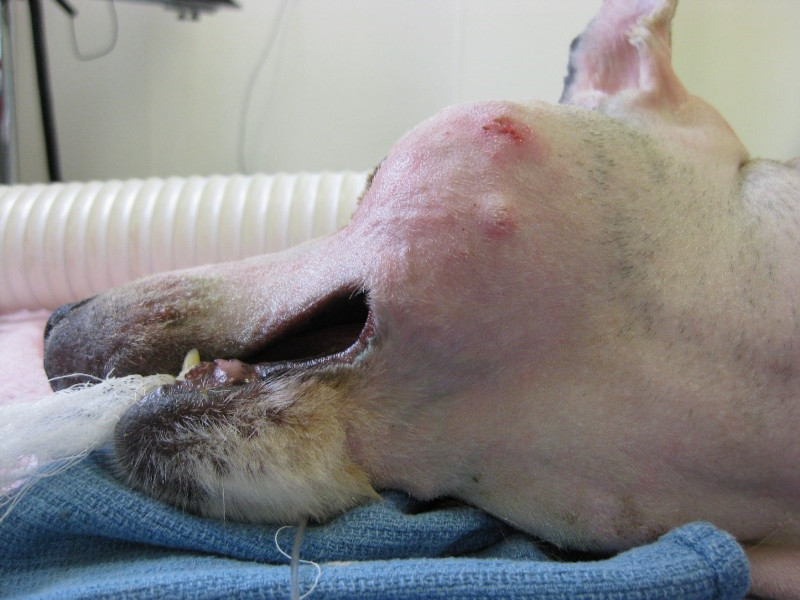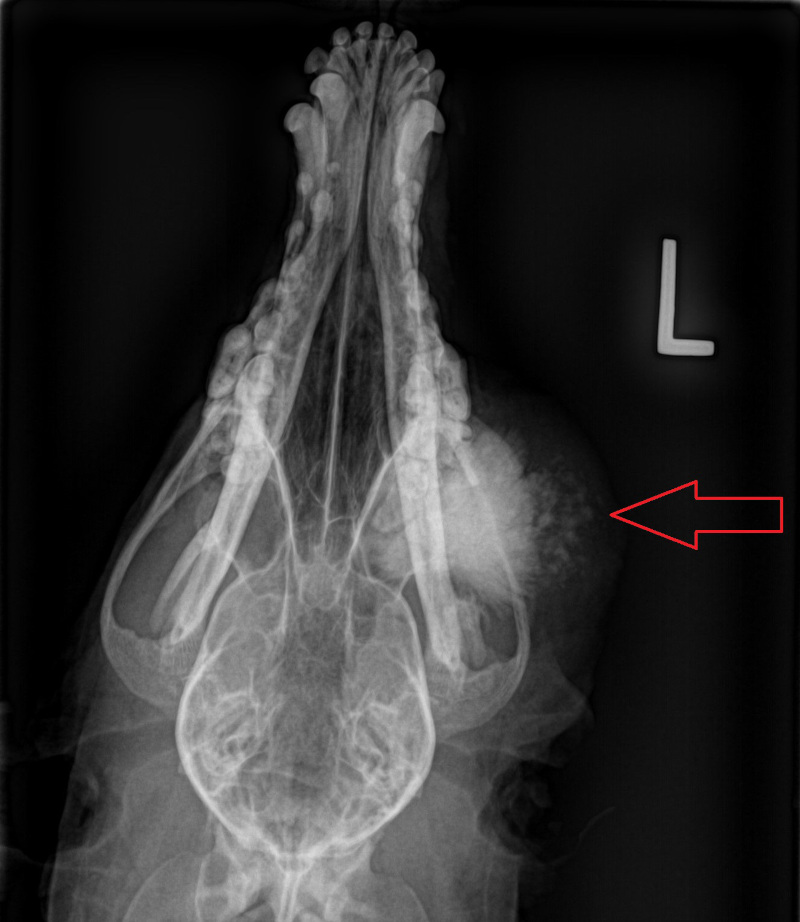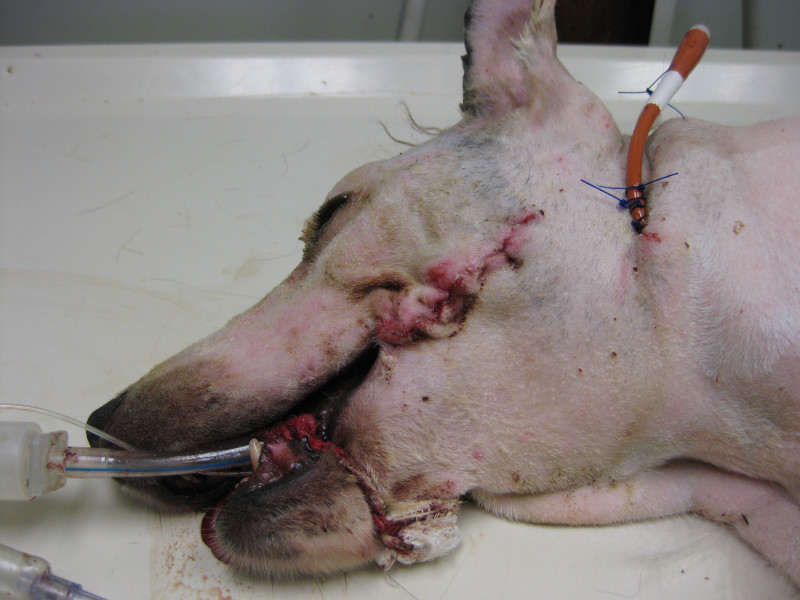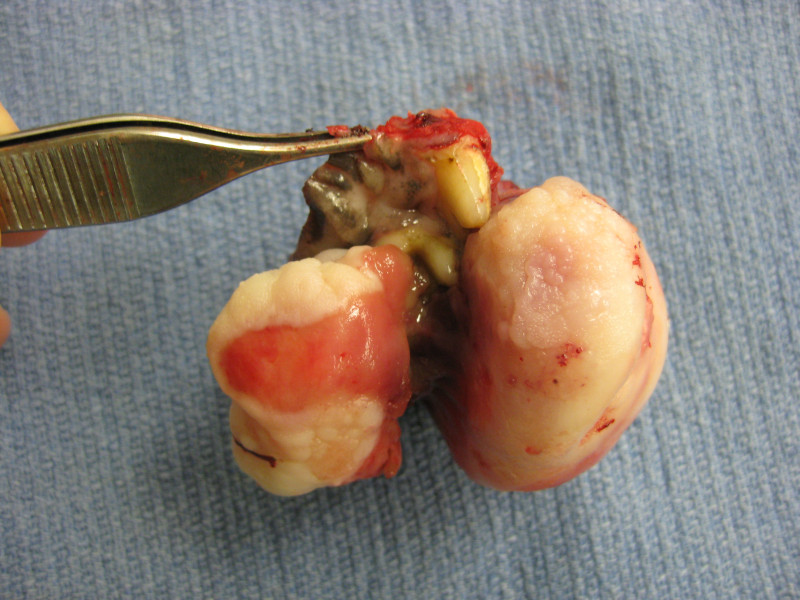Dr. Phil Zeltzman’s Blog
How Fecchi’s Owner Twisted My Arm

NOTE: This is a free excerpt from my upcoming book about cancer in pets!
Fecchi, an 8-year-old Sheltie, had a firm, golf ball-sized mass in his left cheek. It was hard to be more specific since I couldn’t even open his jaw during the exam.

Note: I have pictures of the entire surgery, but I decided some were too graphic. So I will only show a few relatively “tame” pictures.
Upon further exam, it looked like the mass was coming from the upper jaw (maxilla) and/or the the lower jaw (mandible).
Clearly, a major reconstructive and possibly disfiguring surgery was necessary to remove the mass.
Fecchi’s owner had consulted with 3 surgery colleagues, who all had told her that this mass was some horrible cancer that couldn’t be removed.
Given the poor outcome and Fecchi’s lack of appetite, they all told her she should humanely put him to sleep. Yet that option wasn’t good enough for this client.
And that’s when we met. During the surgery consultation, she insisted on removing the mass.
I wasn’t so sure it was in the patient’s best interest.

Fecchi had lost weight and wasn’t in very good health because of the tumor.
So we compromised and agreed on taking a biopsy first. A week later, the biopsy came back as osteo-chondroma – a benign tumor of both bone and cartilage.
Of course, I didn’t believe it. More convinced than ever about her decision, the owner insisted on removing the mass.
After a lot of soul-searching, I finally gave in. I accepted to “explore the area and see what I could do to help.”
Granted, removing jaw tumors is not an uncommon procedure. So why the hesitation?
After all, with the numerous pain management modalities available, we can make these patients comfortable despite aggressive surgery.
Anyway, we ended up taking Fecchi to surgery.
It turned out that the mass came from the upper jaw, but on both sides of the jaw.
As the tumor grew bigger and bigger, the teeth of the lower jaw dug sort of a “gutter” into it.
Surgery was long and challenging. It was followed by reconstruction of the surgery site to make it look as cosmetic as possible.
To make sure Fecchi would get enough nutrition after surgery, we placed a feeding tube to inject a special liquid diet directly into the stomach (see the red tube coming out of the skin).

The entire mass was submitted to the lab.

Fecchi recovered smoothly from anesthesia.
He stayed in ICU overnight, on IV fluids, pain medications, and antibiotics.
10 days later, the biopsy report came back. As you can imagine, it concluded… osteochondroma – still a benign tumor!
So what’s the moral of the story?
Fecchi’s owner kind of twisted my arm – in a nice way – and she was totally right.
Should we always do what clients require?
Of course not.
Otherwise, we would do ear crops, declaws, and tail docks all day long.
What’s the moral of the story? It is perfectly acceptable to perform a procedure, invasive or not, as long as client and practitioner are on the same page, and the procedure is acceptable and ethical.
Sometimes, it’s good to be pushed out of one’s comfort zone.
Almost one year later, Fecchi was reportedly doing great at home.
“The surgical site looks great,” the owner says. “You can’t even tell that he ever had surgery.”
If you would like to learn how we can help your pet with safe surgery and anesthesia, please contact us through www.DrPhilZeltzman.com
Never miss a blog by subscribing here: www.DrPhilZeltzman.com/blog
Phil Zeltzman, DVM, DACVS, CVJ, Fear Free Certified

Dr. Phil Zeltzman is a traveling veterinary surgeon in Pennsylvania & New Jersey. An award-winning author, he loves to share his adventures in practice along with information about vet medicine and surgery that can really help your pets. Dr. Zeltzman specializes in orthopedic, neurologic, cancer, and soft tissue surgeries for dogs, cats, and small exotics. By working with local family vets, he offers the best surgical care, safest anesthesia, and utmost pain management to all his patients. Sign up to get an email when he updates his blog, and follow him on Facebook, too!

